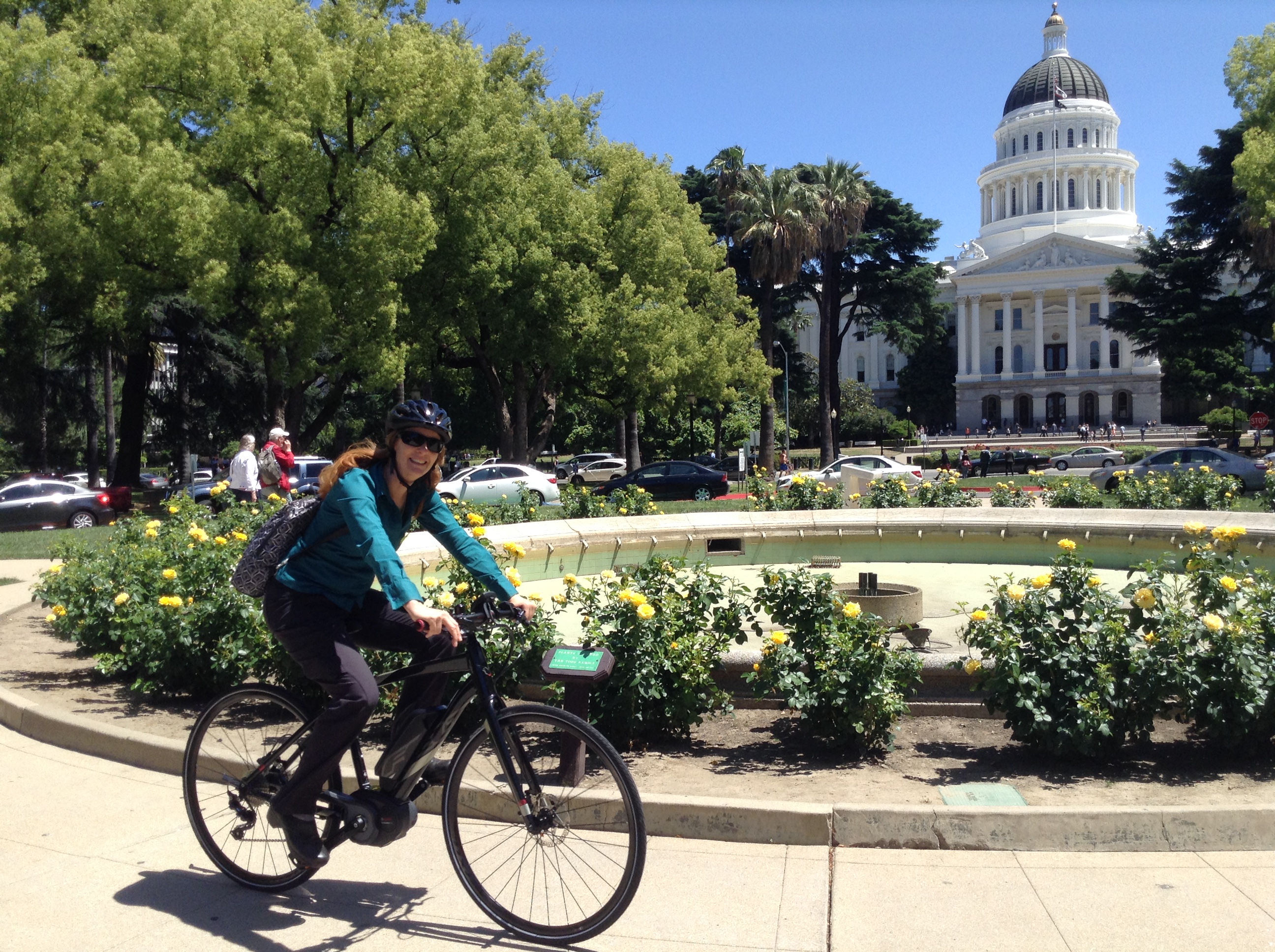California Transportation Commission staff announced the first in a series of workshops it will hold to consider changes in guidelines for the Active Transportation Program, which funds projects that encourage more bicycling and walking.
The commission recently approved funding for additional projects through its third funding cycle, which was made possible by the passage of S.B. 1, the gas tax increase. Now staff is beginning to tackle Cycle 4, which is slated to begin the application process next spring.
That means any changes need to be made quickly. Staff are planning eight workshops around the state in the next few months. The first one will take place this Thursday in Sacramento, with a second planned for Chico on November 3. See below for more details. All the meetings will have a call-in option for those who can't make it in person.
Staff have been considering two basic changes to the guidelines: spreading project funding out over four years, instead of two; and creating separate applications for different kinds of projects.
When the ATP was first developed, said Laurie Waters, program manager for the ATP, the belief was that smaller projects would be easier and quicker to implement, and a two-year cycle would work, “but that has not proven to be the case.” Even small projects have to deal with environmental review and right of way issues, and it has been difficult for planners to get projects delivered within two years.
The addition of $100 million in S.B. 1 funds not only will make it possible to fund more projects overall, but it also gives the program new flexibility in allocating that funding. That is, by overlapping funding cycles, allocations per project can be spread out over four years. “That should help a lot,” said Waters.
The other change—creating separate applications for different project types—will also benefit applicants. Under current guidelines, a plan that might need a few hundred thousand dollars has to complete the same complex application as a large multi-agency, multi-district project that is looking for $25 million. Instead, the new draft guidelines—here [PDF], and to be posted at the CTC site soon—propose five separate applications: for bike and pedestrian plans; for programs, such as educational or encouragement programs; and for projects by size—small, medium, and large—with a more streamlined application for smaller projects.
An open question is how to score different project types against each other. Right now the program divides projects into three categories (a statewide competition among all projects, projects that are prioritized by the large regional planning organizations, and projects in small urban and rural areas) and strives for some geographic balance. Each application gets a score, depending on factors including how they meet ATP goals and how they serve disadvantaged communities. The highest scoring applications in each group are awarded funds.
“Some people think we need set asides for each project type, so similar projects compete only against each other,” said Waters. “We also might try just scoring the applications as we have been and selecting the highest scoring projects, and see how that works, in the theory that we would still have a good mix of projects.”
The first couple of workshops will broadly focus on changes to the guidelines that have been proposed by staff and the Technical Advisory Committee, and to gather input on any other issues that need to be addressed. “Once those are pretty much nailed down,” said Waters, “Future workshops will focus on the applications. The TAC has already drafted preliminary applications for the different project types, and those will be the starting point.”
Waters warns that the new draft guidelines might look like they have a lot of changes, but most are due to standardizing language among the various programs being funded by S.B. 1, such as the Trade Corridors program and Solutions for Congested Corridors.
The tentative schedule of workshops, below, will be confirmed in the next few days and posted on the CTC website. Although all the meetings will have a call-in option, with either a way to submit questions by email or with an operator to manage comments, Waters suggests that participants who have a lot of input try to show up in person, if possible.
The kickoff meeting will be held this Thursday, October 26, in Sacramento, from 10 a.m. to 1 p.m., at the Sacramento Area Council of Governments, 1415 L Street, Suite 300. See here for call-in details.
The second will take place on November 3 in Chico, also from 10 a.m. to 1 p.m., at the Butte County Association of Governments, 326 Huss Drive, Suite 100.
Future workshops are tentatively planned for:
- November 9 in Los Angeles
- November 16 in Bay Area
- November 29 in Fresno
- December 5 or 8 in Riverside or somewhere nearby, in conjunction with CTC meeting there
- January 9 in Watsonville
And there may possibly be one last wrap-up workshops in Sacramento the week of January 22, before the CTC meeting at the end of that month, where the draft guidelines will be submitted to the commission for their comments.
Note: GJEL Accident Attorneys regularly sponsors coverage on Streetsblog San Francisco and Streetsblog California. Unless noted in the story, GJEL Accident Attorneys is not consulted for the content or editorial direction of the sponsored content.






